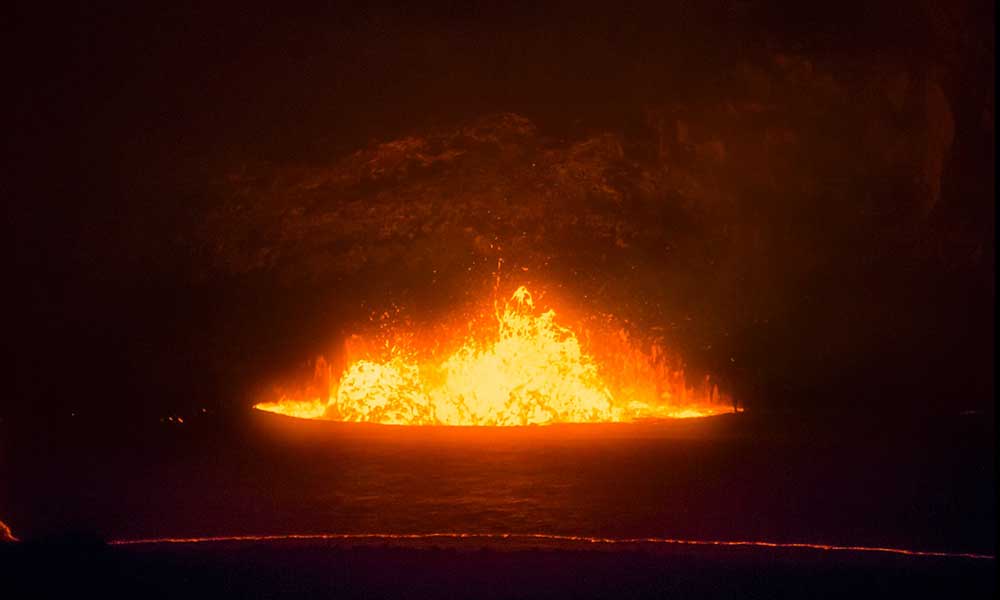Pele is the goddess of volcanoes in the Hawaiian religion.
Often referred to as “Madame Pele”, she is one of the most famous deities in Hawaiian mythology and plays a key role in the island’s many myths and legends. Let’s take a look at some of the “facts” and symbols of the goddess Pele.
Hawaiian Goddess Pele’s Symbols: fire & volcanoes
Legend has it that Pele lives in Kilauea, an active volcano located on the Hawaiian islands.
She lives there with a family of fire gods, including Namaka and Hi’iaka, and her domain spans the whole of the Big Island.
Most of these deities, including Pele herself, are said to be the children of Haumea, the Hawaiian goddess of childbirth and fertility.
What is Pele’s Origin Story?
There are several legends describing Pele’s journey to the Hawaiian islands.
In one of the most common stories, the goddess Pele journeyed to Hawaii from Tahiti on a canoe.
During her journey, she set numerous fires on many different islands, but all the while her sister, Namaka, chased her and tried to stop her.
The sisters fought and Pele was killed, destroying her body but allowing her spirit to continue living on the islands.
Another legend says that Pele comes from a land close to the clouds while another says she hails from a floating land.
These variations are common in all mythologies and you’ll see them a lot in Greek and Roman mythologies.
After all, these stories were passed from generation to generation through word of mouth and folk tales and they adapted as the world changed.
Can You Visit Pele’s Home?
Kilauea is one of the most active of the five volcanoes that form the Big Island of Hawaii.
It is over 200,000 years old and at the time of writing, the most recent eruption ended in May 2021.
You can pay a visit to this mythical land via the Hawaii Volcanoes National Park, which is visited by millions of tourists every year. In fact, it’s one of the most popular attractions in all of Hawaii, which is quite a statement considering just how popular the Hawaiian Islands are with tourists.
How is Pele Worshipped on the Hawaiian Islands?
Pele myths are abundant throughout the Hawaii Islands.
Not only is she the goddess of volcanoes, but she is also the goddess of the hula.
In fact, Pele’s sister, Hi’iaka, is said to be the first one to perform the hula dance.
The fiery passion of the hula is an homage to Pele.
What is the Greek, Roman, and Norse Equivalent of Pele?
Hawaii is a world apart from Greece, Rome, and Scandinavia.
The landscape, history, and culture of these regions are vastly different from that of the Hawaiian islands, and so Hawaiian myths tend to be very different as well.
However, there are some similarities between Pele and other ancient gods.
One of the closest examples in Greek mythology is Hephaestus, the god of the forge and fire.
He was a blacksmith and a craftsman, but his life was all about creating and protecting and it was a life in which fire played a big role.
Vulcan was the Roman equivalent of the Greek god Hephaestus, and his stories follow a similar trajectory.
As for Norse gods, Loki is a close match. Loki is best-known as the trickster god and was famously portrayed by Tom Hiddleston in several Marvel films.
But Loki was also the Norse god of fire.
Do you want more mythology? We have gods of the sea & Hawaiian gods for you.







